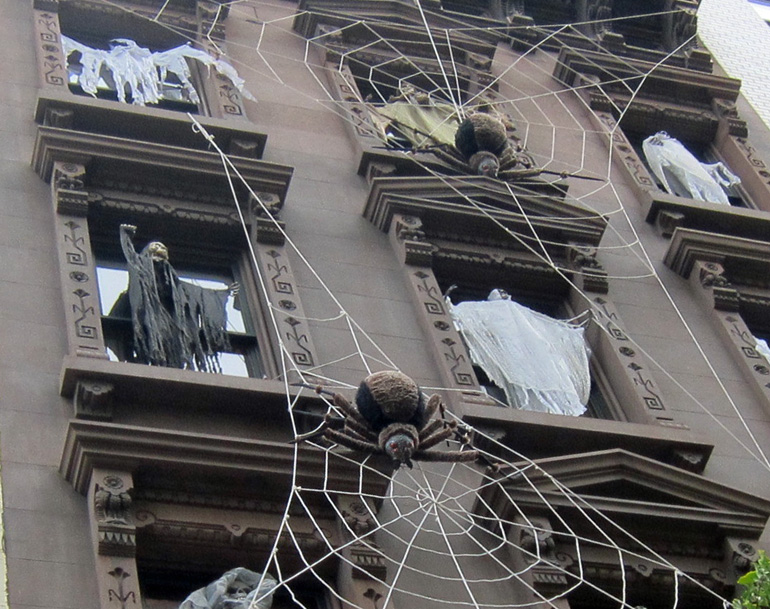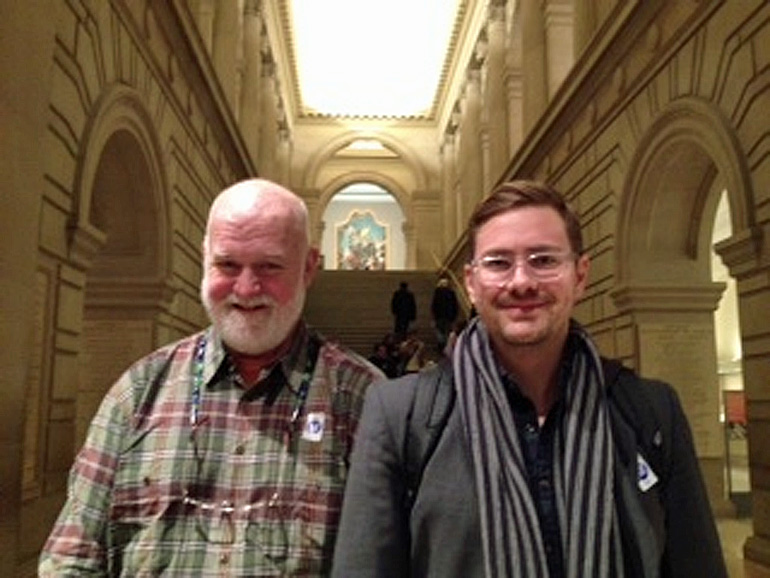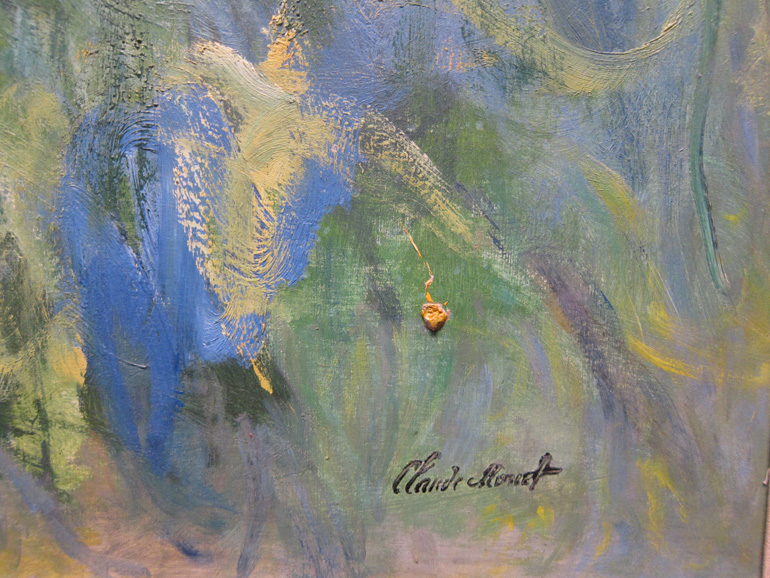Gotham Diary:
Cross
31 October 2013
Thursday, October 31st, 2013
After writing yesterday’s entry, I began to feel tired and heavy. It was like a hangover, only without the headache and the remorse — that biological remorse that must have been an evolutionary response to ingesting toxins. There was none of that yesterday, just a mildly painful exhaustion. I had no idea what the matter could be until Kathleen reminded me that I’m up for a Remicade infusion on Monday. Ordinarily, I’d be quite aware of this, and prepared for feeling low, but for some reason, the month of November has stood at the end of an ever-receding hallway, like the one in The Shining (innit?). This October has certainly been densely packed. Wallace Stevens comes to mind,
This is the barrenness
Of the fertile thing that can attain no more.
While worrying that I might be on the edge of something — this was before Kathleen’s helpful reminder — I made my way to the end of Artemis Cooper’s biography of Patrick Leigh Fermor, subtitled “An Adventure.” That’s not what it was for me. My vote for subtitle would be “A Disappointment.” Whether that would refer to the book, to its subject, or to both, I can’t quite tell. Why was I reading about Patrick Leigh Fermor? Well, his name kept cropping up, in books by and and about the Mitford sisters, for example. He was often referred to as a “beloved travel writer,” or words to that effect.* He seemed to be a swashbuckling Peter Pan, walking from Rotterdam to Istanbul at the age of nineteen and abducting a German general during World War II. (A few years ago, his correspondence with Deborah Devonshire was published as In Tearing Haste. I still haven’t read it — a very uncharacteristic response for this Triviata fan.**) Photos would show him to be sturdily good-looking, but of course they didn’t begin to explain the phenomenon. I couldn’t figure out how the contrarieties were resolved in one man: perfect gentleman, rowdy party animal; good friend, casual womanizer; careful writer, disorganized wastrel. The greatest tension of all — and I write this after having read a book about him — is Leigh Fermor’s conjunction of suave, quasi-military maturity and completely boyish immaturity. While I was trying to puzzle all this out, Cooper let drop a bomb, and I never quite recovered from the scathing dismissal belched by a very provoked Somerset Maugham (whom the adventurer had teased, unpardonably, about his stammer): “that middle-class gigolo for upper-class women.”
The charge is not without its elements of truth. Paddy Fermor was certainly middle-class, notwithstanding his mother’s pretensions to Irish aristocracy. The women in his life were gentry or better (sometimes much better — Lady Diana Cooper, the author’s grandmother, was a great chum). They supported him in most ways. Certainly without the resources of his longtime companion and eventual wife, Joan Rayner, Leigh Fermor would have gone on living out of suitcases, in other people’s guest rooms, and never enjoyed the monumentally unpretentious villa that he and Joan built on the Ionian Sea. Far from seeming to life a live devoted to fun and larks, Leigh Fermor struck me, in Cooper’s pages, as running one step ahead of being branded a bounder.
Joan is often mentioned in Paddy’s letters and notebooks, usually as a quiet presence.Sometimes he sees her reading, and notices the book and what she is wearing; sometimes he glances at her sitting opposite him, brows furrowed, deep in concentration over her pocket chess set. (Joan played chess to a high standard, but never with Paddy, was too impatient to be any good at the game.) Sometimes, in a notebook, he will comment that they had had a row that made them both miserable, though he never mentions the cause. It was probably money. Joan had to bear the strain of his extravagance as she tried to make her allowance stretch for two, and sometimes even her patience snapped. It is interesting to note how often Paddy was attracted to older women, and he was younger than the two great loves of his life. Yet he was not looking so much for a mother, as for someone to be Wendy to his Peter Pan, someone who would keep his fee on the ground, and at the same time do the tiresome, grown-up things so that he would not have to.
It didn’t help that I hadn’t read any of Leigh Fermor’s books. I’m going to give one a try — it ought to arrive any minute — and I’m going to put it down the tenth time it reminds me of Norman Douglas, if that happens. Elizabeth David, the alluring culinary heroine of Artemis Cooper’s last biography, pointed me to Douglas, whose work she adored. So I read South Wind and just about hated it.
The heart of the matter may be my own Anglophilia. I don’t long to escape the green and scepter’d isle. But Patrick Leigh Fermor and Elizabeth David and Norman Douglas, not to mention Nancy Mitford — these men and women couldn’t stand being in England for more than a short spell. Their longing for warmer weather was exceeded only by the desire for friendships that weren’t conditioned by background. Abroad, it didn’t matter who your family were or what schools you passed through. (Also, pounds made it possible to live in relative grandeur.) In Greece, Leigh Fermor got a lot of extraordinary mileage out of a vague personal resemblance to Lord Byron, the greatest of English Greek patriots. His wartime antics involved a lot of bonding with Cretan brigands, but the abduction of General Kreipe, aside from its stunt value, accomplished nothing but savage German reprisals.
It is also the case that vagabondage holds no romantic charm for me. My idea of roughing it is staying at home. It’s likely that I’ll never really grasp the fun in in what Paddy Fermor and his friends got up to. I have enough trouble living down my own exploits.
* I’ve just dug up Anthony Lane’s essay about PLF in The New Yorker. (May 22, 2006)
** La Triviata — am I making this up? — is what the duchess of Devonshire tagged a musical revue, concocted from various Mitford legends, that flopped forty-odd years ago.




















